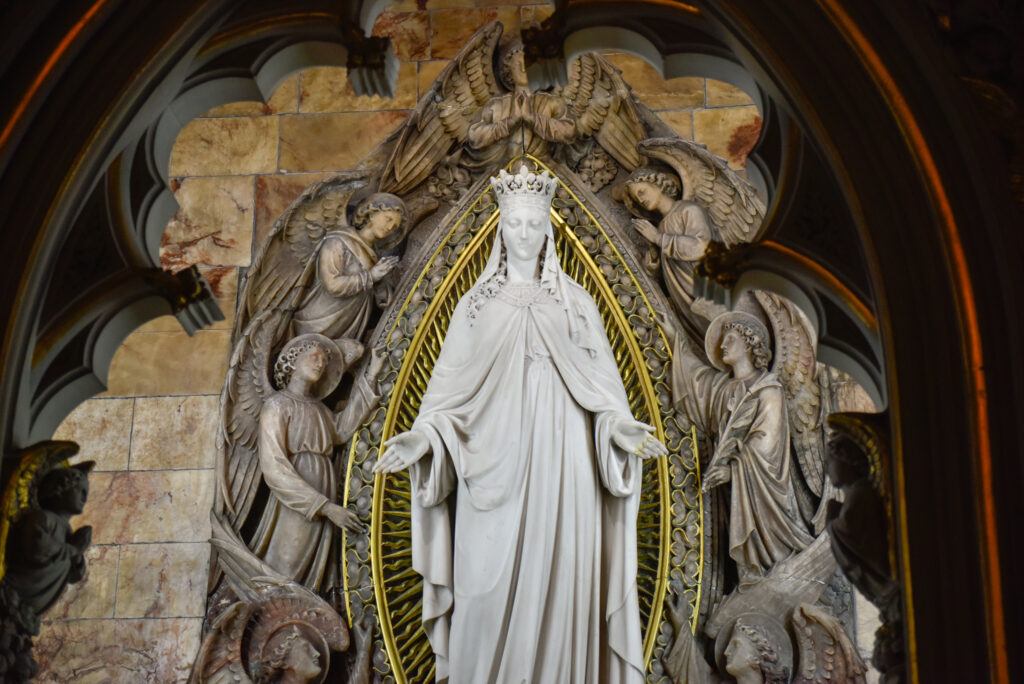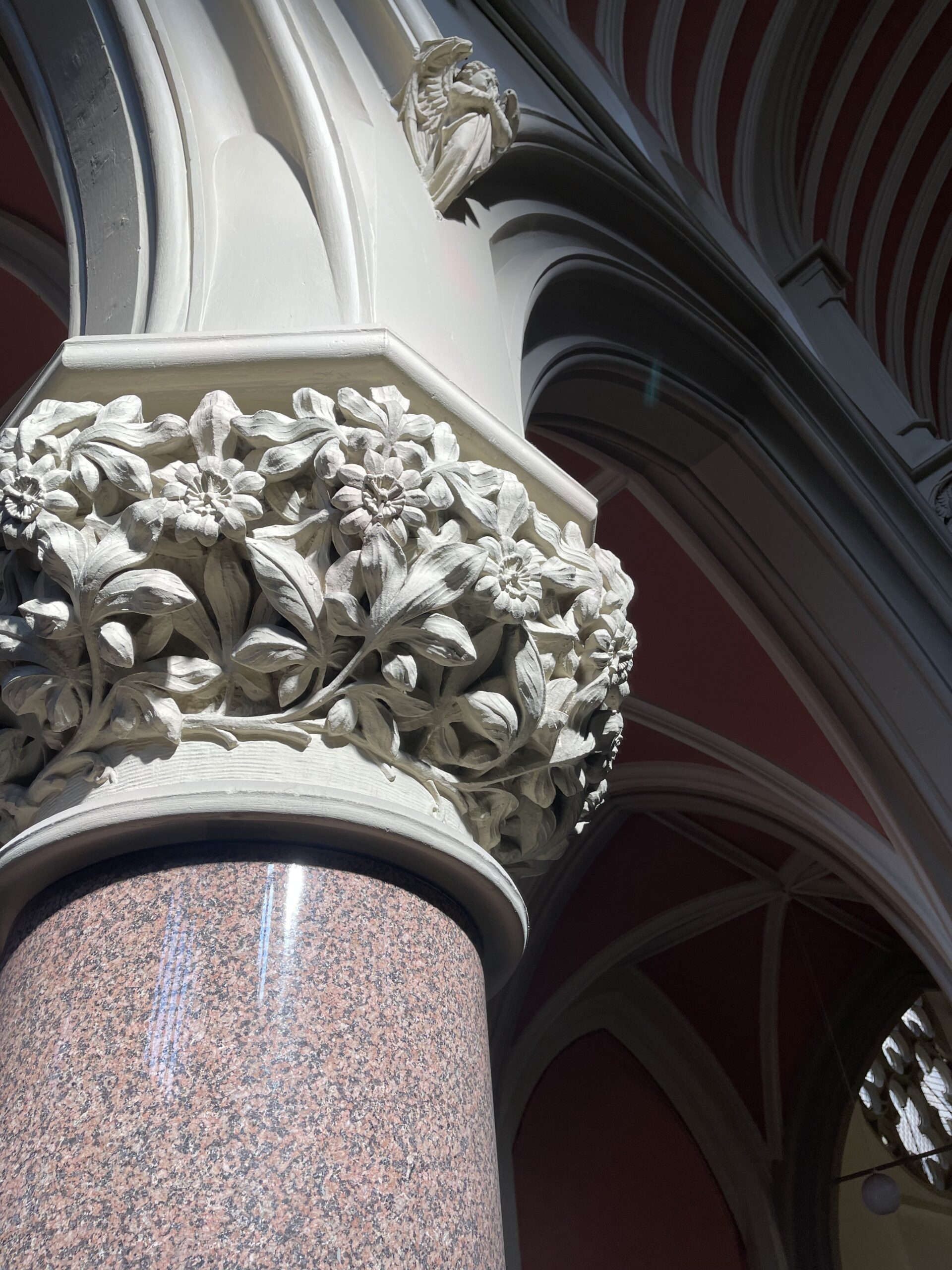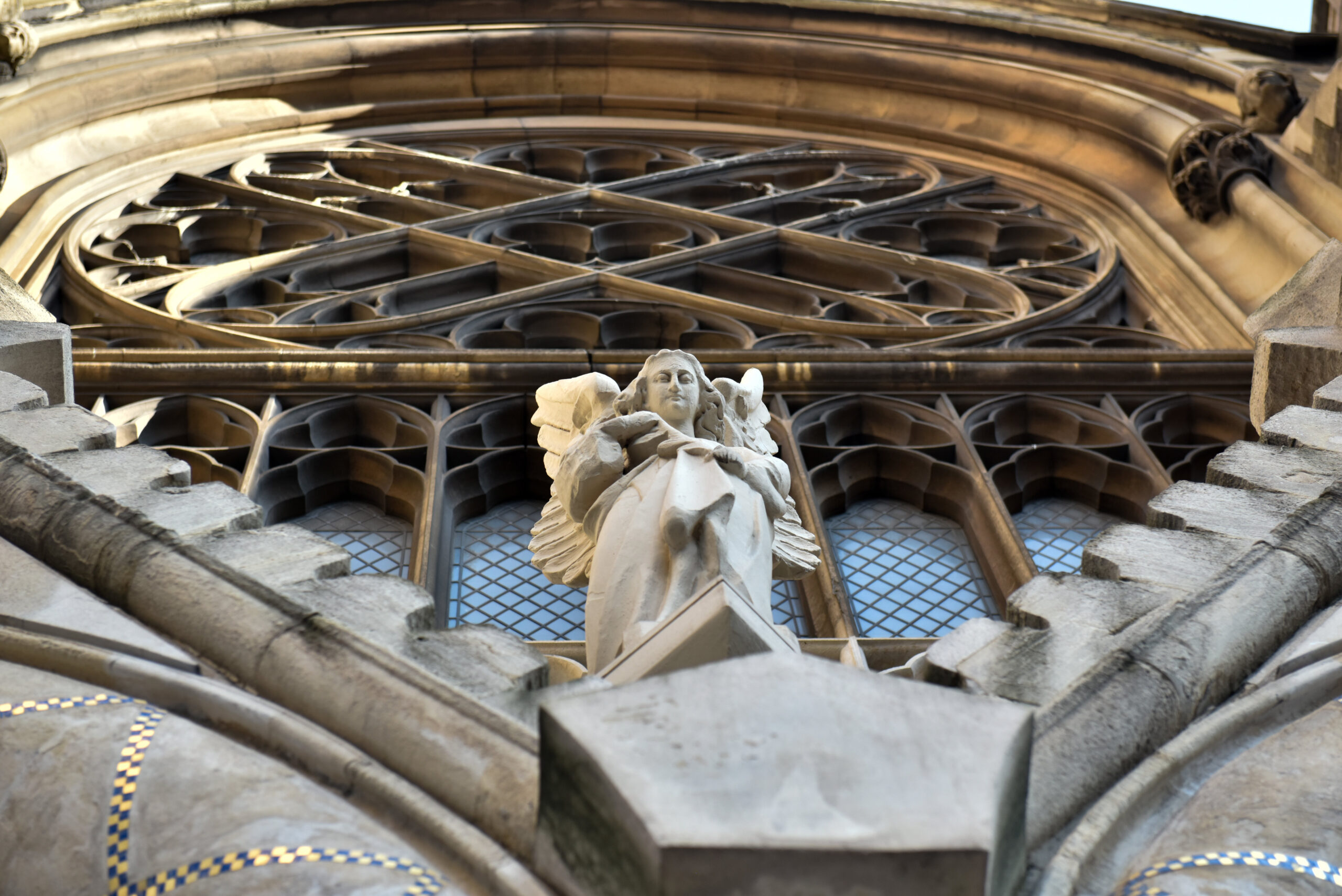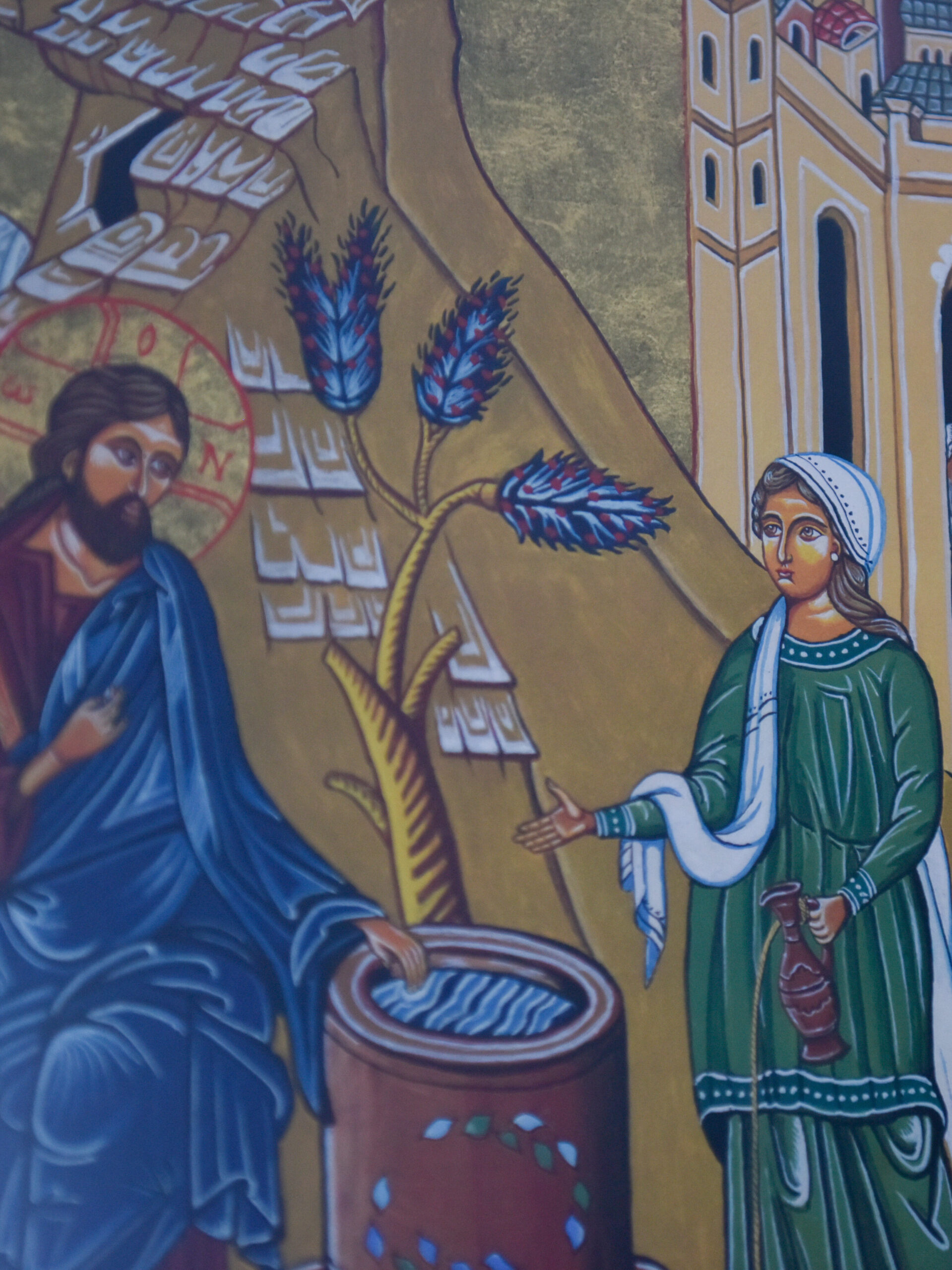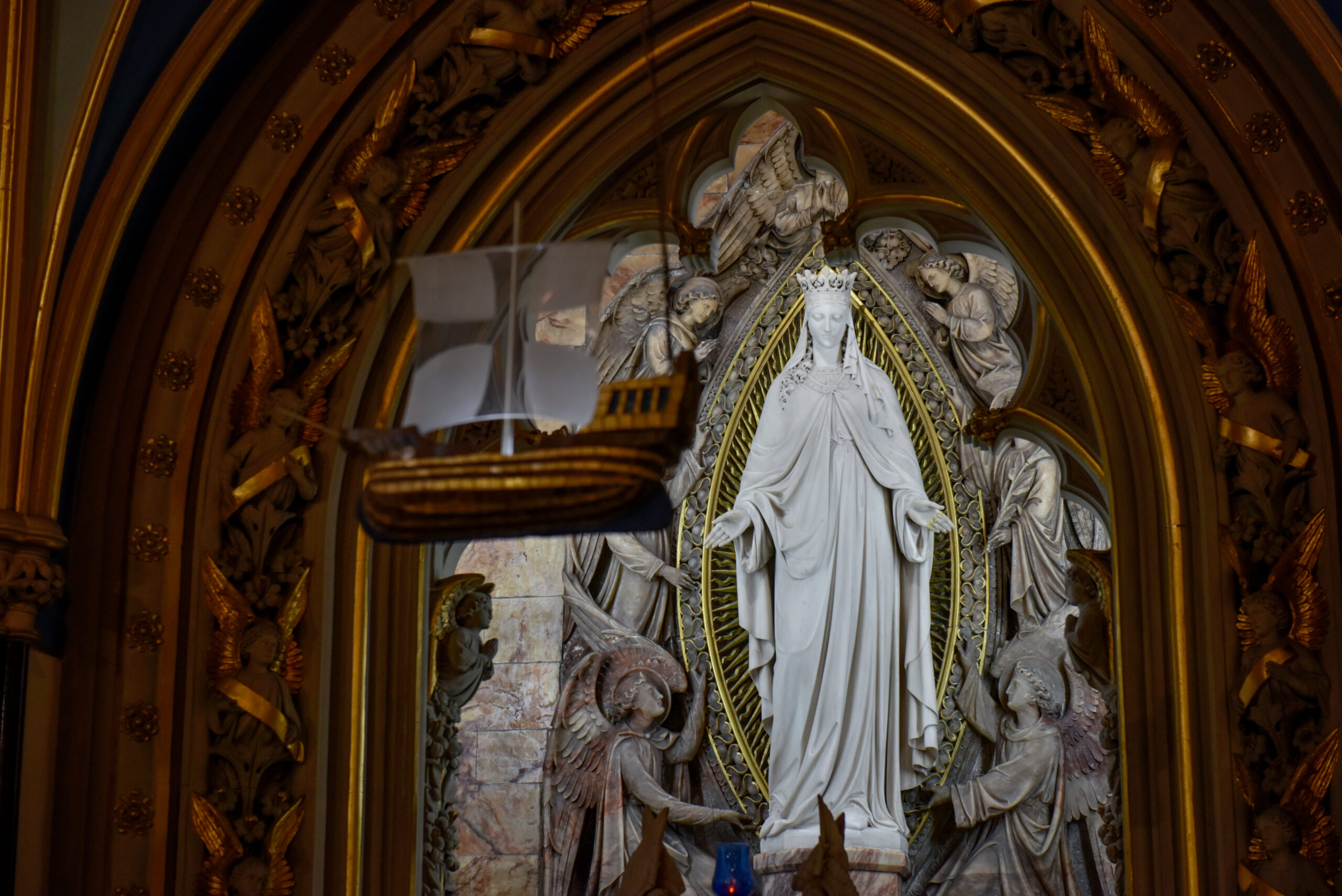
Shrine of Our Lady of Graces
The Lady Chapel, east of the transept, is seen through a double lender arch and it constitutes a separate chapel in the form of an apse.
This is the Shrine of Our Lady of Graces commemorating the Abbey of Our Lady of Graces, built by royal command on the spot occupied by the former Royal Mint building.
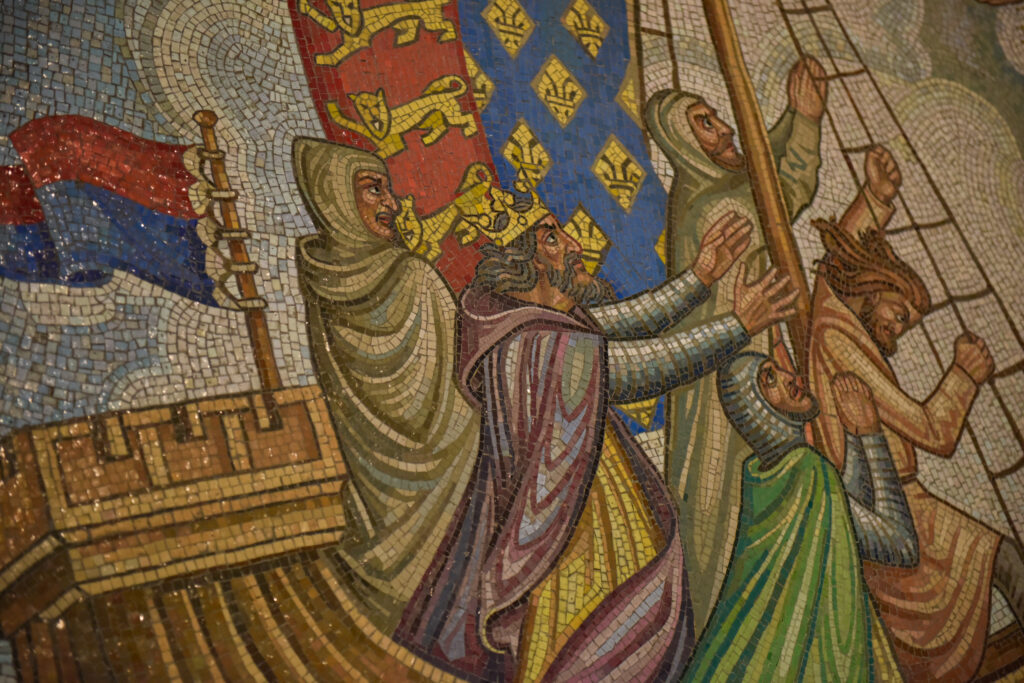
King Edward III, in mortal peril of shipwreck during a storm, vowed that if he were returned safely to land he would build a monastery “to honour God and Our Lady of Graces”. Safely home, he ordered that an abbey be built on the site of the disused Holy Trinity Cemetery, and invited Cistercian Monks from Beaulieu Abbey in Hampshire, with Abbot William of the Holy Cross as their leader, to take possession of it.
Letters patent under the date, 20 March 1350, recording this foundation are extant. They are:
“Edward by the Grace of God, King of England… whilst with devout consideration, we reflect on the various dangers to which, by land and sea, we have been exposed, without any hope of escape, and on the lavish favour with which, in these perils, the clemency of Christ has mercifully prevented us, our heart burns within us and we are inflamed with love for Jesus Christ Our Lord Himself and Our Ladye, His most beloved Mother Marye. Desiring therefore, humbly, to arrange something to their praise and glory, in memory of such favours, we have determined to found and endow in the new cemetery near Our Tower of London, a house for monks of the Cistercian Order, which we will to be called the Free Chapel of Blessed Marye of Graces”.
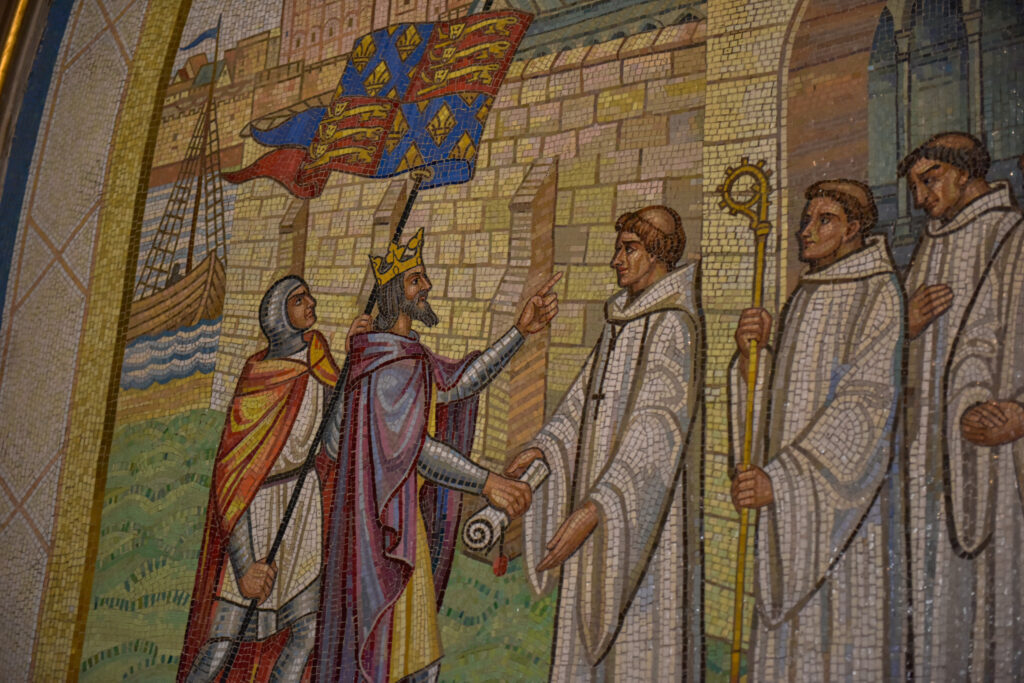
This Abbey became known as the King’s East Minster. It was suppressed in the time of Henry VIII. What became of the monks we do not know. In the reign of Elizabeth I this site held the navy victualling yard, referred to by Samuel Pepys in his Diary. When the victualling yard was transferred to Deptford in 1784, the site became vacant and the Abbey of Our Lady of Graces was no more than a distant memory.
The restoration of a shrine to Our Lady of Graces was an ambition of many, including Miss Susan Rachel Walker.
It was her elder brother Charles who gave Fr Cooke the £1,000 that helped buy the site for the church. She donated the much-loved shrine of Our Lady of Graces, leaving an enduring memory to her name and generosity.
In ancient times people returning from work at nightfall used to visit the Abbey of Our Lady of Graces and sing the “Salve Regina”. The creation of the shrine allowed a revival of this lovely custom. Up to the outbreak of World War I, workers would make nightly visits to the shrine on their way home. Sadly, wartime restrictions brought the practice to an end. Sir Stuart Knill, Lord Mayor of London (1892-3), visited the Shrine in his mayoral splendour and donated a sum of money to have the altar supplied with flowers. He requested that the “Salve Regina” be sung at least once a week, a devotion that still lives on in part in the regularity with which worshippers visit the shrine for private prayer after services in the church.
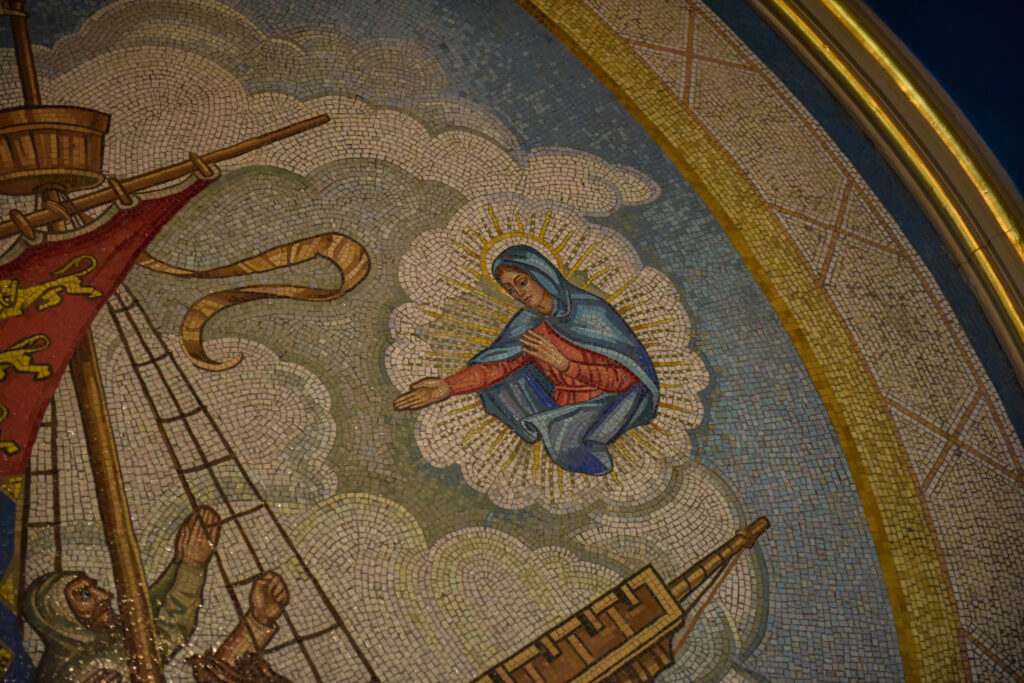
The shrine is elaborately carved in rose-tinted alabaster; it has three bays vaulted by a groin and ribbed ceiling. The altar has a central circular panel flanked by four vertical panels on either side. These are delicately carved with the mediaeval emblem of potted lilies, which are ribboned to carry the angelic salutation “Ave Maria Gratia Plena”. The gradus is boldly treated with carved fleur-de-lis. The tabernacle is adorned with two sentinel angels carved in white marble. Fourteen angels carved in stone surround the altar and the grotto behind it. In the deep niche of the grotto six more radiant angels in alabaster form a background for the exquisite Carrera marble statue of Our Lady of Grace. This is the statue already referred to as the work of Mr Boulton of Cheltenham.
The grotto is lighted from a concealed window, which gives the statue an ethereal splendour. The story of Edward III’s vow while storm-tossed at sea and his handing over the Abbey to the Cistercians is depicted in beautiful mosaic on the walls to right and left in the other bays. The triple slender columns in grey marble that support the vault of this beautiful chapel, have minutely carved capitals that deserve more detailed examination.
